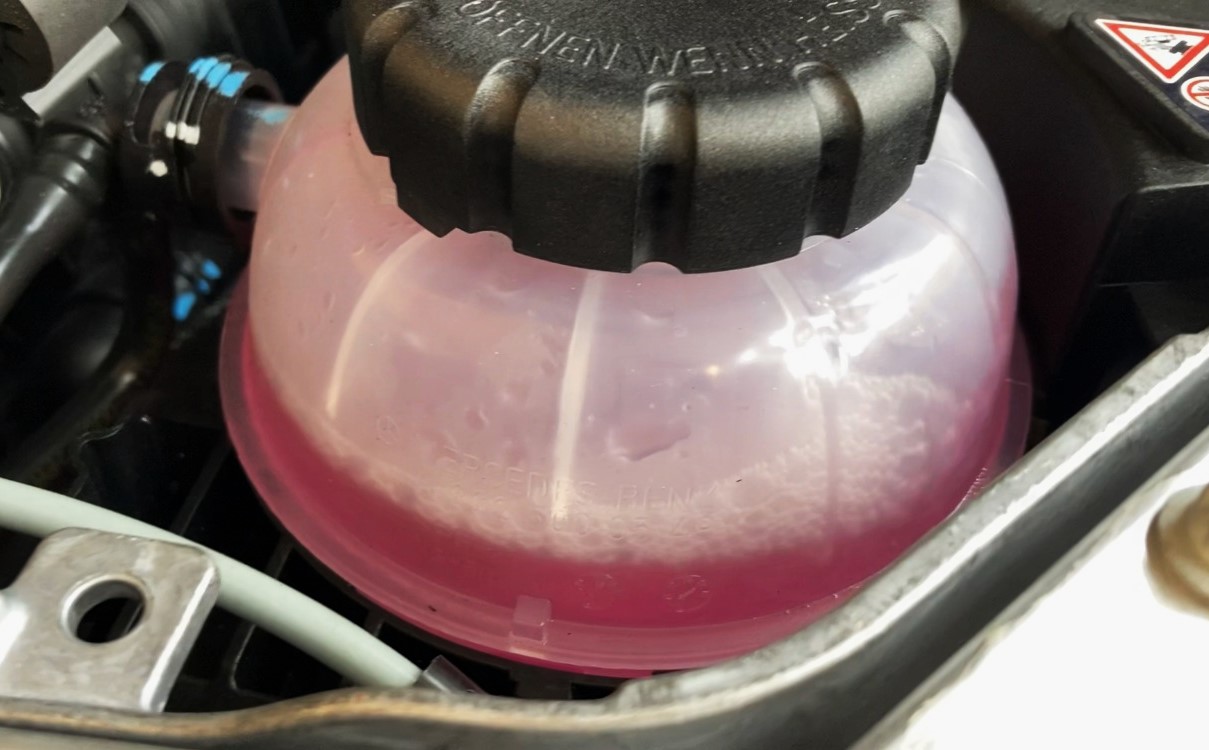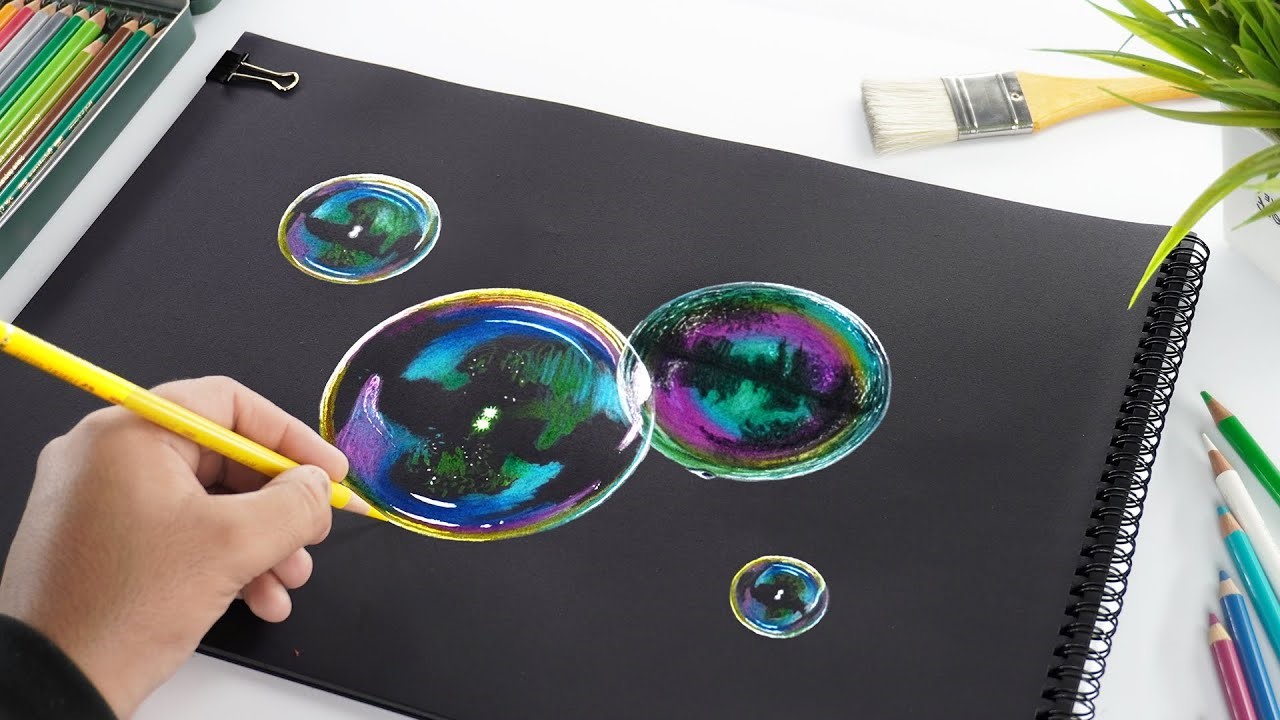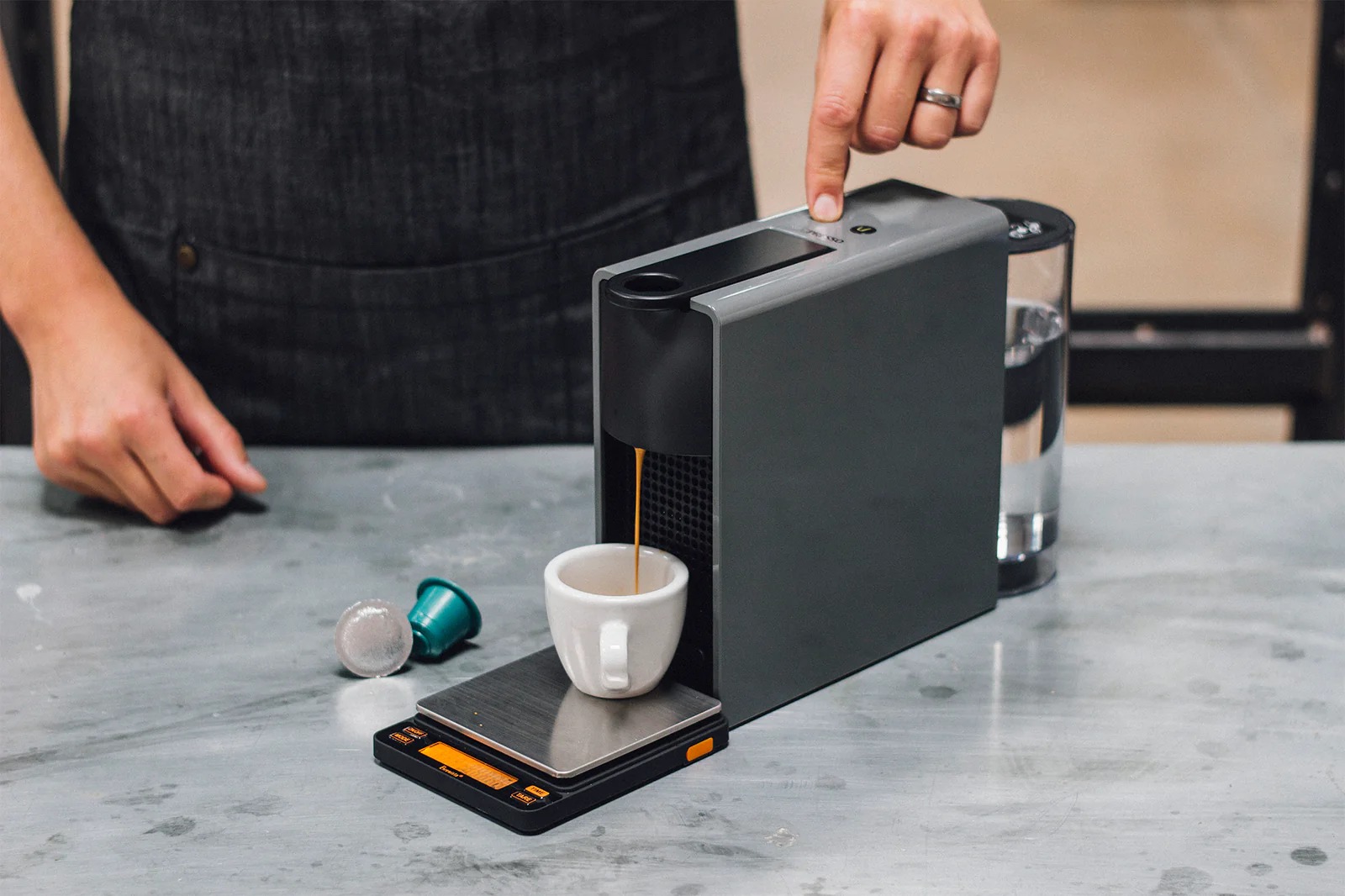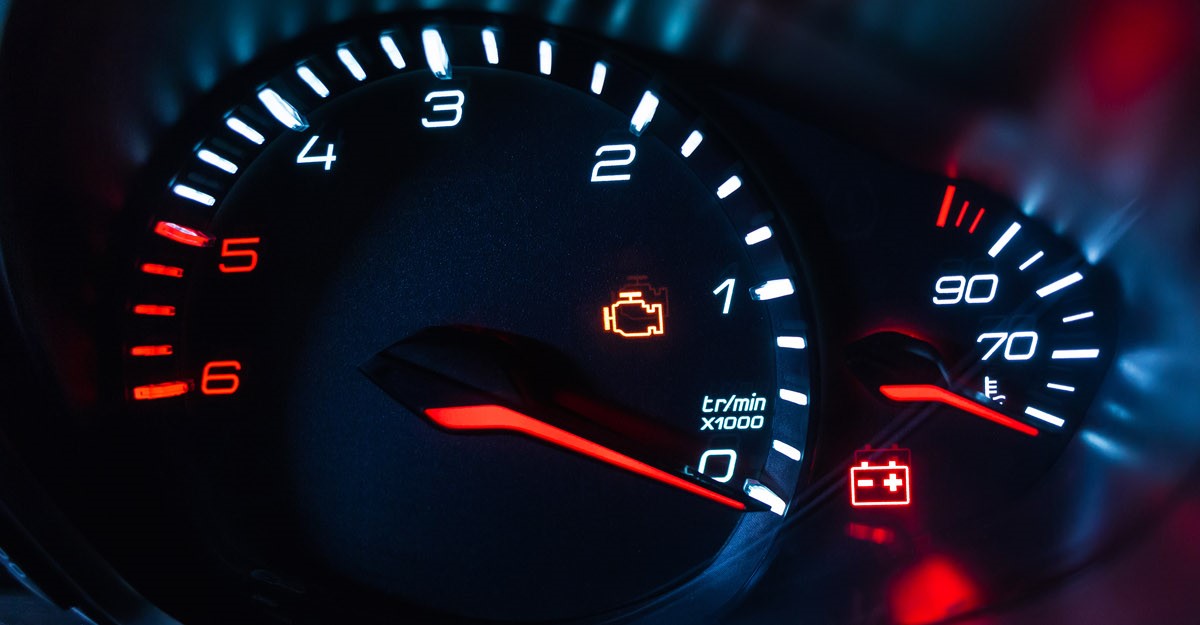Home>Automotive>The Surprising Reason Your Coolant Is Bubbling Out Without Overheating


Automotive
The Surprising Reason Your Coolant Is Bubbling Out Without Overheating
Published: January 20, 2024
Discover the surprising reason why your coolant is bubbling out without overheating. Get expert automotive insights and solutions to resolve this issue.
(Many of the links in this article redirect to a specific reviewed product. Your purchase of these products through affiliate links helps to generate commission for Noodls.com, at no extra cost. Learn more)
Table of Contents
Introduction
Your vehicle's cooling system plays a crucial role in maintaining the optimal operating temperature of the engine. One of the common issues that car owners encounter is coolant bubbling out of the reservoir or radiator, even when the engine is not overheating. This seemingly perplexing occurrence can be a cause for concern, but understanding the underlying reasons and potential solutions is essential for ensuring the health and longevity of your vehicle.
In this article, we will delve into the surprising reasons behind the bubbling of coolant without concurrent overheating. By exploring the intricacies of coolant systems, the significance of the radiator cap, the potential causes of coolant bubbling, its effects on the vehicle, and viable solutions, you will gain valuable insights into addressing this issue effectively.
Stay tuned as we unravel the mysteries behind this seemingly enigmatic phenomenon and equip you with the knowledge needed to navigate through the complexities of your vehicle's cooling system. Let's embark on this enlightening journey to uncover the surprising reason behind your coolant bubbling conundrum.
Understanding Coolant Systems
The cooling system of a vehicle is a complex network of components designed to regulate the engine's operating temperature. At the heart of this system is the coolant, a specialized fluid that absorbs heat from the engine and dissipates it through the radiator. Understanding the fundamental principles of coolant systems is crucial for comprehending the phenomenon of coolant bubbling without concurrent overheating.
Coolant, typically a mixture of water and antifreeze, circulates through the engine, absorbing the intense heat generated during combustion. As it flows through the engine block and cylinder head, the coolant absorbs this thermal energy, preventing the engine from reaching dangerously high temperatures. This process is vital for maintaining the engine's efficiency and preventing overheating, which can lead to severe damage.
The radiator, an integral component of the cooling system, facilitates the dissipation of heat from the coolant. As the heated coolant flows into the radiator, it releases its thermal energy to the surrounding air, thereby lowering its temperature. This cooled coolant is then recirculated back into the engine to continue the heat absorption process.
In addition to the coolant and radiator, the water pump ensures the continuous circulation of coolant throughout the system. By propelling the coolant through the engine and radiator, the water pump plays a pivotal role in maintaining the optimal operating temperature of the engine.
Furthermore, the thermostat acts as a regulatory mechanism, controlling the flow of coolant based on the engine's temperature. When the engine reaches the designated operating temperature, the thermostat opens, allowing the coolant to circulate through the radiator and dissipate heat. Conversely, in colder conditions, the thermostat restricts the flow of coolant to facilitate quicker engine warm-up.
Understanding the intricate interplay of these components within the coolant system provides valuable insight into the mechanisms that govern the engine's thermal equilibrium. This foundational knowledge sets the stage for comprehending the unexpected occurrence of coolant bubbling, despite the absence of overheating.
The Role of the Radiator Cap
The radiator cap may appear deceptively simple, but its role is pivotal in maintaining the efficiency and integrity of the vehicle's cooling system. Positioned on the radiator or a separate reservoir, the radiator cap serves as a multifaceted component with several crucial functions.
First and foremost, the radiator cap is designed to withstand the high pressures generated within the cooling system. As the engine operates, the coolant absorbs substantial heat, causing it to expand. This increase in temperature and pressure necessitates a robust and reliable sealing mechanism to prevent the coolant from boiling over or escaping. The radiator cap, equipped with a spring-loaded valve, effectively manages these elevated pressures, ensuring that the coolant remains contained within the system.
Furthermore, the radiator cap facilitates the regulation of the cooling system's operating pressure. By maintaining a specific pressure level, typically indicated on the cap itself, the radiator cap enables the coolant to achieve a higher boiling point. This elevated boiling point is essential for preventing the coolant from vaporizing prematurely, thereby enhancing its heat absorption capabilities and preserving the engine's optimal temperature.
In addition to pressure management, the radiator cap serves as a conduit for the release of excess coolant and steam. When the coolant expands beyond the system's capacity, the radiator cap's valve allows the overflow to be channeled into an auxiliary reservoir, often referred to as the overflow or expansion tank. This mechanism ensures that the coolant is safely contained and can be replenished into the system once it cools down, thereby maintaining the appropriate coolant level within the system.
Moreover, the radiator cap incorporates a vacuum valve that facilitates the influx of coolant from the overflow tank back into the radiator as the engine cools. This cyclical process of coolant replenishment ensures that the cooling system remains at the optimal operating level, preventing air pockets and maintaining the overall efficiency of the system.
In essence, the radiator cap serves as a guardian of the cooling system, regulating pressure, managing coolant overflow, and facilitating the seamless circulation of coolant. Its multifaceted role is instrumental in preserving the functionality and longevity of the vehicle's engine by safeguarding against overheating and coolant loss.
Understanding the pivotal role of the radiator cap provides valuable insights into its contribution to the overall health and performance of the cooling system. As we unravel the mysteries behind coolant bubbling, the significance of the radiator cap becomes increasingly apparent, underscoring its indispensable role in maintaining the equilibrium of the vehicle's thermal management system.
Causes of Coolant Bubbling
The enigmatic phenomenon of coolant bubbling without concurrent overheating can stem from various underlying causes, each contributing to the perplexing nature of this occurrence. Understanding these potential triggers is essential for diagnosing and addressing the issue effectively.
-
Blown Head Gasket: A blown head gasket can instigate the bubbling of coolant, often accompanied by other telltale signs such as white exhaust smoke and the presence of coolant in the engine oil. This critical component, situated between the engine block and cylinder head, serves to seal the combustion chambers, preventing the mixing of coolant and engine oil. When compromised, the head gasket can permit the entry of exhaust gases into the coolant passages, leading to the formation of air pockets and subsequent bubbling.
-
Excessive Pressure: Elevated pressure within the cooling system, attributable to a malfunctioning radiator cap or a restricted overflow hose, can prompt coolant bubbling. The failure of the radiator cap to regulate the system's pressure effectively may result in the expulsion of coolant, leading to bubbling within the reservoir or radiator. Similarly, a clogged or obstructed overflow hose can impede the proper release of excess pressure, causing the coolant to bubble as a consequence.
-
Air Pockets: The presence of air pockets within the cooling system can disrupt the circulation and functionality of the coolant, culminating in bubbling. Air ingress may occur during coolant replenishment or as a result of a leak, compromising the system's efficiency. These air pockets impede the proper flow of coolant, leading to localized overheating and the subsequent formation of bubbles within the system.
-
Cracked Cylinder Head: A cracked cylinder head can precipitate the bubbling of coolant, signifying a breach in the engine's integrity. This fissure allows the escape of combustion gases into the coolant passages, leading to the accumulation of air pockets and the manifestation of coolant bubbling. Additionally, a cracked cylinder head may result in the contamination of the coolant with engine oil, further exacerbating the issue.
-
Failed Water Pump: A malfunctioning water pump can disrupt the continuous circulation of coolant, leading to localized overheating and the formation of air pockets. This impairment in coolant flow can instigate bubbling within the system, indicative of the compromised functionality of the water pump.
Understanding the diverse array of potential causes behind coolant bubbling provides a comprehensive framework for diagnosing and resolving this perplexing issue. By scrutinizing these underlying factors, you can embark on the journey to restore the equilibrium and functionality of your vehicle's cooling system.
Effects of Coolant Bubbling
The manifestation of coolant bubbling within a vehicle's cooling system can have far-reaching implications, extending beyond the seemingly innocuous visual display. These effects serve as poignant indicators of underlying issues within the system, warranting prompt attention and resolution. Understanding the ramifications of coolant bubbling is essential for comprehending its impact on the vehicle's performance and longevity.
The presence of air pockets within the cooling system, often precipitated by coolant bubbling, can impede the optimal circulation and functionality of the coolant. These air pockets disrupt the uniform distribution of coolant, leading to localized overheating within the engine. This aberrant thermal imbalance can compromise the engine's efficiency and performance, potentially resulting in diminished power output and increased fuel consumption. Moreover, prolonged exposure to localized overheating can accelerate wear and tear on critical engine components, diminishing their operational lifespan and necessitating costly repairs.
Furthermore, coolant bubbling can serve as a harbinger of more severe issues such as a blown head gasket or a cracked cylinder head. These underlying maladies, if left unaddressed, can culminate in catastrophic engine failure, necessitating extensive and exorbitant repairs. The presence of coolant in the engine oil, white exhaust smoke, or the discernible scent of coolant within the cabin can accompany these severe complications, underscoring the urgency of diagnosing and rectifying the root cause of coolant bubbling.
In addition to the mechanical implications, coolant bubbling can engender a sense of apprehension and uncertainty among vehicle owners. The visual display of bubbling coolant, often accompanied by the release of steam, can evoke concerns regarding the safety and reliability of the vehicle. This unease can erode the confidence and peace of mind of the driver, highlighting the psychological impact of this seemingly enigmatic occurrence.
Moreover, the presence of coolant bubbling can compromise the integrity of the cooling system, leading to coolant loss and potential overheating in the long run. The expulsion of coolant from the reservoir or radiator, facilitated by excessive pressure or compromised sealing mechanisms, can diminish the system's coolant level. This reduction in coolant volume can undermine the system's ability to regulate the engine's temperature, posing a heightened risk of overheating and consequential engine damage.
In essence, the effects of coolant bubbling extend beyond the visual display, permeating the mechanical, psychological, and operational facets of the vehicle. By acknowledging these effects, vehicle owners can discern the urgency of addressing coolant bubbling and embarking on the path to restore the optimal functionality and reliability of their vehicle's cooling system.
Solutions to Coolant Bubbling
Addressing the enigmatic occurrence of coolant bubbling necessitates a comprehensive approach aimed at rectifying the underlying causes and restoring the equilibrium of the vehicle's cooling system. By implementing targeted solutions, vehicle owners can mitigate the detrimental effects of coolant bubbling and safeguard the longevity and performance of their vehicles.
Thorough Inspection and Diagnosis
The initial step in resolving coolant bubbling entails a meticulous inspection and diagnostic assessment of the cooling system. This comprehensive evaluation encompasses a scrutiny of the radiator cap, hoses, water pump, and other pertinent components to identify potential sources of malfunction. Additionally, a thorough examination of the cylinder head, head gasket, and engine block is imperative to detect any fissures or breaches that may contribute to the manifestation of coolant bubbling.
Radiator Cap Replacement
A malfunctioning or compromised radiator cap can precipitate coolant bubbling by failing to regulate the system's pressure effectively. Replacing the radiator cap with a high-quality, compatible alternative is crucial for restoring the integrity of the sealing mechanism and mitigating excessive pressure within the cooling system. This proactive measure serves to prevent coolant expulsion and the formation of air pockets, thereby addressing the root cause of coolant bubbling.
System Flushing and Coolant Refill
The presence of air pockets within the cooling system can disrupt the circulation and functionality of the coolant, leading to localized overheating and subsequent bubbling. Conducting a thorough system flush to expel air pockets and debris, followed by the replenishment of the coolant with the manufacturer-recommended fluid, is instrumental in restoring the optimal functionality of the cooling system. This meticulous process ensures the elimination of air ingress and the preservation of the system's efficiency.
Addressing Underlying Maladies
In instances where coolant bubbling is indicative of severe maladies such as a blown head gasket or a cracked cylinder head, prompt intervention is imperative. Engaging the expertise of a qualified mechanic to address these critical issues is essential for preventing further damage and restoring the integrity of the engine. The meticulous repair or replacement of the compromised components serves to mitigate the manifestation of coolant bubbling and avert potential catastrophic engine failure.
Regular Maintenance and Monitoring
Sustaining the health and functionality of the cooling system necessitates regular maintenance and vigilant monitoring. Adhering to the manufacturer's recommended maintenance schedule, including coolant flushes, radiator inspections, and pressure checks, is essential for preempting potential issues and preserving the system's efficiency. Additionally, vigilant monitoring of the coolant level and the presence of bubbles within the reservoir or radiator enables early detection of anomalies, facilitating prompt intervention and resolution.
By implementing these targeted solutions and embracing a proactive approach to cooling system maintenance, vehicle owners can effectively address the perplexing occurrence of coolant bubbling. This concerted effort serves to preserve the integrity and functionality of the vehicle's cooling system, ensuring optimal performance and longevity while mitigating the detrimental effects of coolant bubbling.
Conclusion
In conclusion, the enigmatic phenomenon of coolant bubbling without concurrent overheating presents a perplexing conundrum for vehicle owners, underscoring the intricacies of the cooling system and the potential underlying maladies. By unraveling the surprising reasons behind this occurrence and exploring the multifaceted facets of the cooling system, we have gained valuable insights into addressing this enigmatic issue effectively.
The pivotal role of the radiator cap in regulating pressure, managing coolant overflow, and facilitating the seamless circulation of coolant has emerged as a cornerstone of the cooling system's functionality. Understanding the significance of this seemingly simple component underscores its indispensable contribution to maintaining the equilibrium and efficiency of the vehicle's thermal management system.
Furthermore, the diverse array of potential causes behind coolant bubbling, ranging from a blown head gasket to excessive pressure and air ingress, serves as a comprehensive framework for diagnosing and resolving this perplexing issue. By scrutinizing these underlying factors, vehicle owners can embark on the journey to restore the equilibrium and functionality of their vehicle's cooling system.
The effects of coolant bubbling extend beyond the visual display, permeating the mechanical, psychological, and operational facets of the vehicle. Acknowledging these effects underscores the urgency of addressing coolant bubbling and embarking on the path to restore the optimal functionality and reliability of the vehicle's cooling system.
Addressing the enigmatic occurrence of coolant bubbling necessitates a comprehensive approach aimed at rectifying the underlying causes and restoring the equilibrium of the vehicle's cooling system. By implementing targeted solutions, vehicle owners can mitigate the detrimental effects of coolant bubbling and safeguard the longevity and performance of their vehicles.
In essence, the journey to unravel the surprising reason behind coolant bubbling has equipped us with the knowledge needed to navigate through the complexities of the vehicle's cooling system. By embracing a proactive approach to maintenance, vigilant monitoring, and prompt intervention, vehicle owners can effectively address the perplexing occurrence of coolant bubbling, preserving the integrity and functionality of the cooling system and ensuring optimal performance and longevity.













